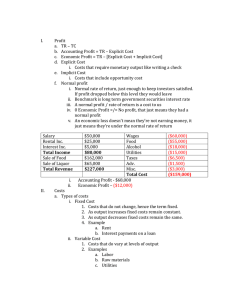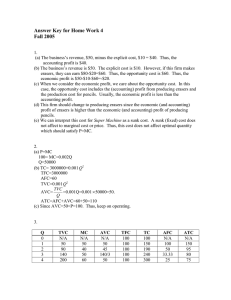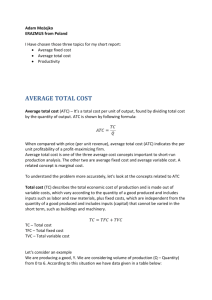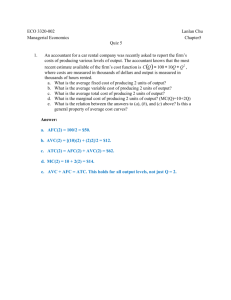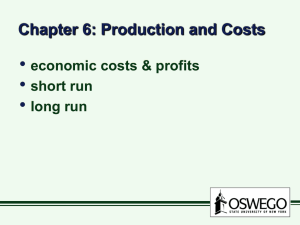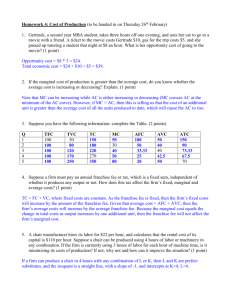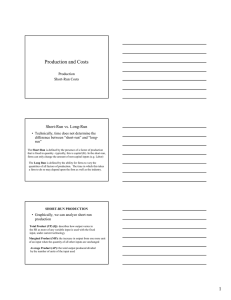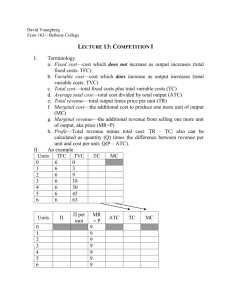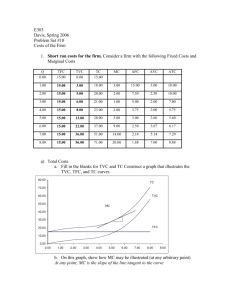Sunk Costs and Short Run Costs KEY
advertisement
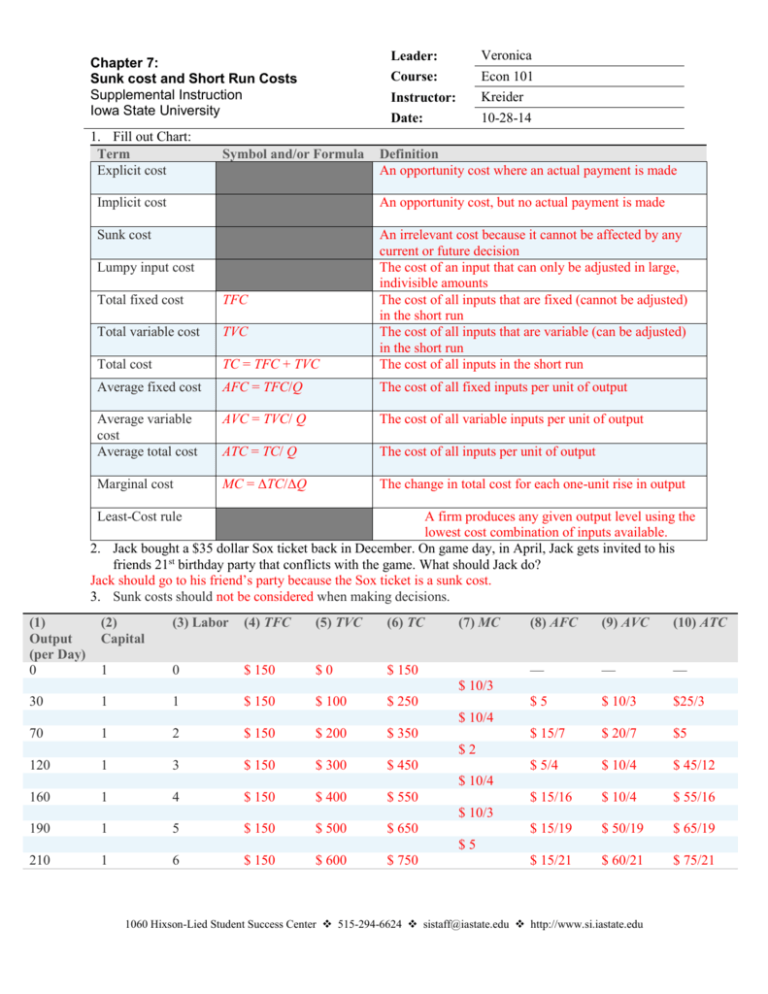
Chapter 7: Sunk cost and Short Run Costs Supplemental Instruction Iowa State University 1. Fill out Chart: Term Explicit cost Symbol and/or Formula Leader: Veronica Course: Instructor: Econ 101 Kreider Date: 10-28-14 Definition An opportunity cost where an actual payment is made Implicit cost An opportunity cost, but no actual payment is made Sunk cost Total fixed cost TFC Total variable cost TVC Total cost TC = TFC + TVC An irrelevant cost because it cannot be affected by any current or future decision The cost of an input that can only be adjusted in large, indivisible amounts The cost of all inputs that are fixed (cannot be adjusted) in the short run The cost of all inputs that are variable (can be adjusted) in the short run The cost of all inputs in the short run Average fixed cost AFC = TFC/Q The cost of all fixed inputs per unit of output Average variable cost Average total cost AVC = TVC/ Q The cost of all variable inputs per unit of output ATC = TC/ Q The cost of all inputs per unit of output Marginal cost MC = ΔTC/ΔQ The change in total cost for each one-unit rise in output Lumpy input cost Least-Cost rule A firm produces any given output level using the lowest cost combination of inputs available. 2. Jack bought a $35 dollar Sox ticket back in December. On game day, in April, Jack gets invited to his friends 21st birthday party that conflicts with the game. What should Jack do? Jack should go to his friend’s party because the Sox ticket is a sunk cost. 3. Sunk costs should not be considered when making decisions. (1) Output (per Day) 0 (2) Capital (3) Labor (4) TFC (5) TVC (6) TC 1 0 $ 150 $0 $ 150 (7) MC (8) AFC (9) AVC (10) ATC — — — $5 $ 10/3 $25/3 $ 15/7 $ 20/7 $5 $ 5/4 $ 10/4 $ 45/12 $ 15/16 $ 10/4 $ 55/16 $ 15/19 $ 50/19 $ 65/19 $ 15/21 $ 60/21 $ 75/21 $ 10/3 30 1 1 $ 150 $ 100 $ 250 $ 10/4 70 1 2 $ 150 $ 200 $ 350 $2 120 1 3 $ 150 $ 300 $ 450 $ 10/4 160 1 4 $ 150 $ 400 $ 550 $ 10/3 190 1 5 $ 150 $ 500 $ 650 $5 210 1 6 $ 150 $ 600 $ 750 1060 Hixson-Lied Student Success Center 515-294-6624 sistaff@iastate.edu http://www.si.iastate.edu Output per Day Units of Capital 0 20,000 40,000 60,000 80,000 10 10 10 10 10 Number of Workers 0 100 133 225 322 TFC TVC TC MC AFC AVC ATC $1,000 $1,000 $1,000 $1,000 $1,000 $0 $9,000 $12,000 $20,250 $29,000 $1,000 $10,000 $13,000 $21,250 $30,000 $0.45 $0.15 $0.4125 $0.4375 $.05 $0.025 $0.0167 $0.0125 $0.45 $0.3 $0.3375 $0.3625 $0.5 $0.325 $0.354 $0.375 4. A soft drink manufacturer that uses just labor (variable) and capital (fixed) paid a consulting firm thousands of dollars to calculate short-run costs at various output levels. But after the cost table (see above) was handed over to the president of the soft drink company, he spilled Dr. Pepper on it, making some of the entries illegible. The consulting firm, playing tough, is demanding another payment to provide a duplicate table. a. Should the soft-drink president pay up? Or can he fill in the rest of the entries on his own? Fill in as many entries as you can to determine your answer. (Hint: First, determine the price of labor.) Cost of labor $90. No, he can fill out the whole chart. b. Do MC, C, and ATC have the relationship to each other that you learned in this chapter? Explain.

